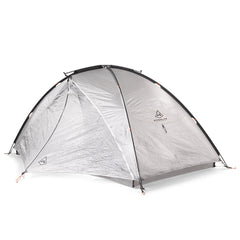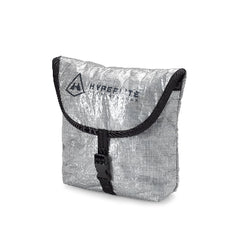What's your strategy for planning trips? Our bud Brett Davis has a stunning multisport adventure resume that has included backpacking, fatbiking, skiing, packrafting, and even llamas. Yes, llamas. To pull these endeavors off, he employs a time-tested methodology that sets him up for repeated success. Read through his tips pick up a few tricks for yourself. Then jump in and share a few of your own.
Words & Photos by Brett Davis
As an outdoor educator of 20+ years and a serial outdoor enthusiast always seeking the next "adventure," I get asked a lot about my trip planning process. For example, how did you come up with the idea to traverse your backyard range via bikes, packrafts, and llamas? How do you logistically put together such a trip as biking and packrafting the Great Divide? How do you choose your partners? And so on.
The answers to these questions have evolved from a "trial and error" approach to a defined process with five distinct steps. Each step has been learned and relearned through doing, failing, evaluating, and succeeding. Just as gardeners endure learning their craft to find what soil and level of moisture can bring forth plant life, I have undergone a similar experience when learning how to bring an adventure to fruition. Regardless of whether you're planting a garden or planning an adventure, both begin with the same ingredient: a single seed of inspiration.
FIND YOUR INSPIRATION!
All worthy and great adventures begin with some form of inspiration—a spark that gets my adventure mind working and flames the will and effort to turn an idea into reality. For me, these catalytic moments arise from many different sources. As a voracious consumer of adventure-oriented books, magazines, and guidebooks, I have been energized by the works of others to recreate or add my unique twist to what someone else has previously done.
These word sources don't have to be in print but also come from various blogs, online journals, websites, etc. Humans are doing rad stuff, and there has been no better time in history to easily learn about the escapades of others.
The greatest source of my inspiration, however, comes from maps. Behind my office desk is a map of my backyard (which is approximately the size of Switzerland). Often, I find myself swiveled around, staring at the colored lines of reality scaled down to a single dimension. I get lost connecting ridgelines, waterways, trails, and forest service roads. I wonder what that alpine basin looks like? Is it possible to paddle that creek and go overland into the next drainage? These thoughts are the seeds of many an escapade. They take root in my adventure brain, germinate for a while, and with some nourishment and time to grow, they become a real experience far better than any of my daydreams.
ANSWER THE 5W'S
Once the seed for adventure has found fertile soil, its roots begin to burst forth in the form of five questions: What, Why, Where, Who, and When. Answering these questions is crucial to defining the parameters of the trip and could play a significant role in its success or not.
What is it that I want to do? For me, it all starts with answering this question. The result will act as a compass for the rest of the trip planning process.
Why do I want to take on this challenge? This is an important question to answer, especially if attempting something larger and more audacious than a simple weekend trip. The answer will be the foundation for defining expectations for the trip and its outcome, as well as those of potential partners. As in life, understanding our motivations is a guiding component to the journey ahead. It can give clarity and purpose, providing something to focus on when things are going sideways.
Where is this trip taking place? This tends to be an easy question to answer and one that I love to ponder. My 'where' is often dependent on things like time, money, and additional resources. It is also an excellent place to get creative. Like so many of us, when my international travel plans fell through over the last few years, I was quickly transitioning to local, fun, and safer options.
Who will be my partners for this adventure? Beyond answering the "why" of a trip, figuring out "who" will join me is the second most important question of the 5W's to answer. A couple of years ago, I wrote an article that explored this question in depth. Your partner(s) can make or
break the outcome of a trip. The answers to the "what" and "why" of the trip help me determine who will join me. My partners for a multi-week expedition to a remote region of the world versus a weekend trip in my backyard may be completely different. A potential teammate's skill set, experience, personality, fitness, goals, and level of trust are all things that I consider in relation to the scope of the adventure. Failing to do so has led to some interesting experiences and straight-up failures that could have been avoided with more thought and honesty given to answering this question.
When will this adventure take place? The answer to this final question will depend upon the appropriate season to take on the adventure you are planning, the mode of travel (skis, boats, bikes, etc.), work schedules and partner availability, etc. These factors can be constraining and can determine whether an adventure takes place or not.
GET THE WORK DONE
With inspiration and the big picture outlined via the 5W's, it is time for the weeding as I start pulling all the details I can ahead of time. As I build my route or become familiar with an already existing route, a lot of energy is spent on this step. I may utilize Google Earth, Cal Topo, Onyx, or other mapping software to get a head start on learning the nuances of the landscape I will be moving through.
Along with planning through the digital world, I will reach out to those who have first-hand knowledge of my adventure area or possibly could lend some support along the way. I have found that good intel from someone who has been there is valuable to building a more complete picture of what to expect when I am on the trip. It is worth calling or sending a few blind emails more often than not—the information gained can be a difference-maker.
Lists, lists, and more lists. During this stage, I begin compiling on paper the equipment that I will need (both personal and group-oriented), along with a menu (including shop lists). I will develop my trip itinerary of where and when I expect to be at certain points along the route. This will include potential resupply, water, lodging/camping, emergency services, etc. A master "to-do" list gets created, including all the little tasks needed to get me to the trip's start line. Even seemingly mundane and straightforward actions ingrained in my adventure mind are still included
on this master list. Through experience, I have found that this minute level of detail and organization is crucial to my trip's success. This preparation also forces me to think about the "what if's" that could happen so I may formulate a possible way to deal with the unexpected when I'm out there. A word of caution, though, as is the human condition, the "what if" game can cause "analysis paralysis syndrome," so make sure not to dig too deep in the dirt, lest one find themselves overloading it or scrapping the adventure altogether.
DEVELOP AN EXPLORER'S MINDSET
It is easy to unintentionally develop a rigid set of expectations about the adventure through the previous three steps. After all, tough questions have been answered and a lot of hard work has gone into preparing for what is to come. We think we have a pretty good idea of what we are in for, but, as the Scottish poet, Robert Burns, stated in his 1786 poem, To a Mouse:
The best-laid schemes of mice and men
Go oft awry.
I have watched extremely competent outdoor people break down and shut down during such times. They begin to unravel and thus, so does the trip. The unmet preconceived expectations derail their mindset, and they may abandon the mission and miss out on a possible transformative experience.
I seek to go on a trip with an explorer's mentality to combat such an outcome. I am curious and open to things not going as planned. Stuff happens in life and on adventures that no amount of planning can predict. The obscure trail that I was going to take is overgrown and no longer exists. The river we intended to paddle has no water in it or is too high to navigate safely. A known resupply point has only canned peaches for sustenance. An unexpected storm comes in and drops a foot of snow on a route making it impassable. It has been stated that a true adventure begins when the unknown rears its head. When these moments happen, I aspire to accept fate and begin thinking critically to solve the problems at hand—striving to remain cool, calm, collected, under control, and open to the unexpected twists of fate. For me, these experiences have been the most powerful in learning about myself and all of which I am capable. I grow the most amid the storms.
ADVENTURE IS NOT IN THE GUIDEBOOK, AND BEAUTY IS NOT ON THE MAP…SEEK, AND YE SHALL FIND.
Written by brothers Terry and Renny Russell in their book, On the Loose, the motto above is the one that guides the collegiate outdoor program that I direct. We can dream, have bucket lists, and plan to the nth degree, but it is all for naught if we don't actually take action and get out there to experience the world. To feel the warmth of the rising sun after an exposed and frigid bivouac. The adrenalin surge after being unexpectedly tossed into a river flowing at its banks from the spring melt. The gritty taste of dirt from dusty singletrack. A sense of wonder and smallness while gazing up at the cosmos from a sleeping bag. Being overwhelmed with satisfaction on having taken those final arduous steps to the sought-after summit. These moments of humanness only take place if we seek them out.
This final step is the most important of the entire trip planning process. In fact, one could ignore all the steps before it and, most likely, have the grandest of adventures. After all, I believe most would agree that an alpine meadow blooming with wildflowers is a sight to behold, way better than any highly manicured garden. If left alone, Mother Nature will always deliver wonder, and an adventure will be had. We just need to act.























